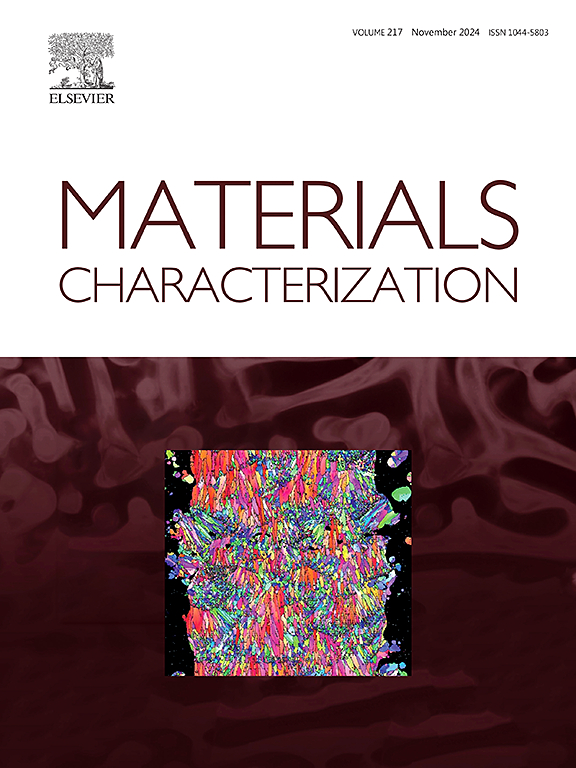Revealing the grain refinement and strengthening mechanisms of Al-Ce-Zr alloy via in-situ synchrotron X-ray imaging and diffraction
IF 4.8
2区 材料科学
Q1 MATERIALS SCIENCE, CHARACTERIZATION & TESTING
引用次数: 0
Abstract
Al-Ce alloys are promising for high-temperature applications due to their thermally stable Al₁₁Ce₃ eutectic phase, yet their strength-ductility trade-off remains a critical challenge. This study introduces Zr to Al-5wt.%Ce hypoeutectic alloys to address this limitation. Combining thermodynamic calculations, microstructure characterization, and in-situ synchrotron X-ray imaging and diffraction, we elucidate the mechanisms of Zr-induced grain refinement and strengthening. Increasing Zr content promotes the formation of primary Al₃Zr phases, which act as heterogeneous nucleation sites, refining the average grain size from 576 ± 182 μm (Zr-free) to 452 ± 148 μm (0.5 wt% Zr). The Al-5Ce-0.5Zr alloy achieves optimized mechanical properties, with ultimate tensile strength increasing from 126 MPa to 137 MPa and elongation improving from 32 % to 37 %. In-situ experiments reveal that load transfer to the Al₁₁Ce₃ phase and enhanced strain hardening in both α-Al and Al₁₁Ce₃ contribute synergistically to strength and ductility. A quantitative model confirms that stress partitioning to Al₁₁Ce₃ rises from 170 MPa to 210 MPa with Zr addition. These findings provide critical insights for designing high-performance Al-Ce alloys via grain refinement and eutectic phase strengthening, advancing their potential in casting and additive manufacturing.
求助全文
约1分钟内获得全文
求助全文
来源期刊

Materials Characterization
工程技术-材料科学:表征与测试
CiteScore
7.60
自引率
8.50%
发文量
746
审稿时长
36 days
期刊介绍:
Materials Characterization features original articles and state-of-the-art reviews on theoretical and practical aspects of the structure and behaviour of materials.
The Journal focuses on all characterization techniques, including all forms of microscopy (light, electron, acoustic, etc.,) and analysis (especially microanalysis and surface analytical techniques). Developments in both this wide range of techniques and their application to the quantification of the microstructure of materials are essential facets of the Journal.
The Journal provides the Materials Scientist/Engineer with up-to-date information on many types of materials with an underlying theme of explaining the behavior of materials using novel approaches. Materials covered by the journal include:
Metals & Alloys
Ceramics
Nanomaterials
Biomedical materials
Optical materials
Composites
Natural Materials.
 求助内容:
求助内容: 应助结果提醒方式:
应助结果提醒方式:


